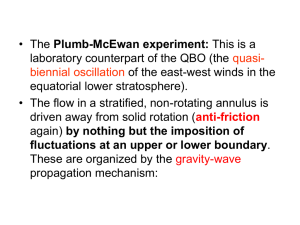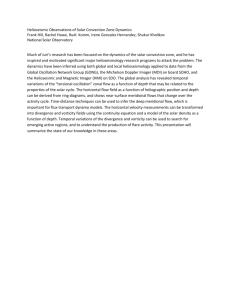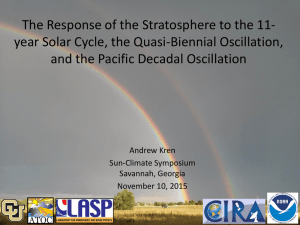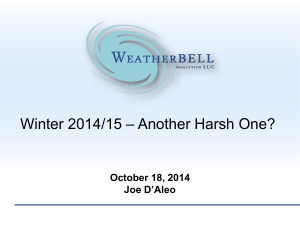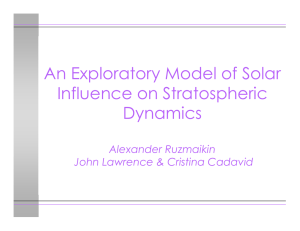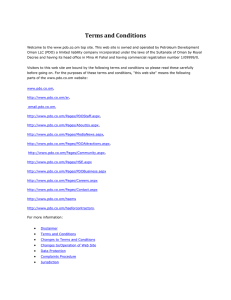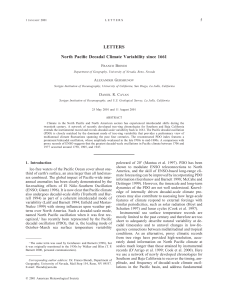The Response of the Stratosphere to the 11-Year Solar Cycle,... and the Pacific Decadal Oscillation
advertisement
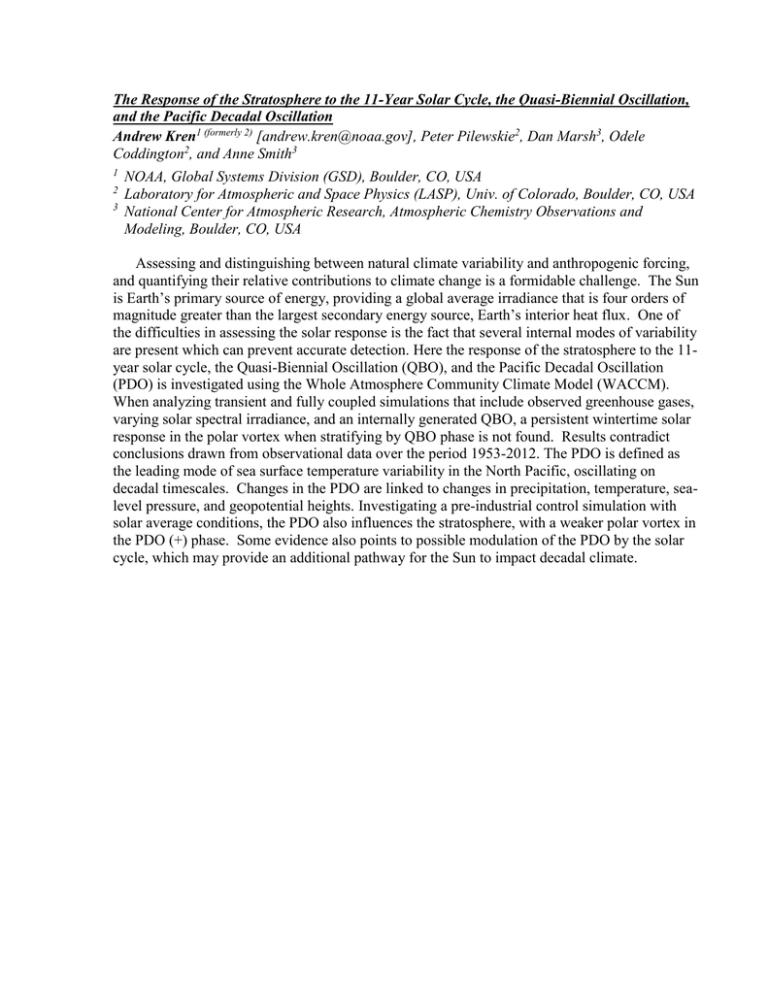
The Response of the Stratosphere to the 11-Year Solar Cycle, the Quasi-Biennial Oscillation, and the Pacific Decadal Oscillation Andrew Kren1 (formerly 2) [andrew.kren@noaa.gov], Peter Pilewskie2, Dan Marsh3, Odele Coddington2, and Anne Smith3 1 2 3 NOAA, Global Systems Division (GSD), Boulder, CO, USA Laboratory for Atmospheric and Space Physics (LASP), Univ. of Colorado, Boulder, CO, USA National Center for Atmospheric Research, Atmospheric Chemistry Observations and Modeling, Boulder, CO, USA Assessing and distinguishing between natural climate variability and anthropogenic forcing, and quantifying their relative contributions to climate change is a formidable challenge. The Sun is Earth’s primary source of energy, providing a global average irradiance that is four orders of magnitude greater than the largest secondary energy source, Earth’s interior heat flux. One of the difficulties in assessing the solar response is the fact that several internal modes of variability are present which can prevent accurate detection. Here the response of the stratosphere to the 11year solar cycle, the Quasi-Biennial Oscillation (QBO), and the Pacific Decadal Oscillation (PDO) is investigated using the Whole Atmosphere Community Climate Model (WACCM). When analyzing transient and fully coupled simulations that include observed greenhouse gases, varying solar spectral irradiance, and an internally generated QBO, a persistent wintertime solar response in the polar vortex when stratifying by QBO phase is not found. Results contradict conclusions drawn from observational data over the period 1953-2012. The PDO is defined as the leading mode of sea surface temperature variability in the North Pacific, oscillating on decadal timescales. Changes in the PDO are linked to changes in precipitation, temperature, sealevel pressure, and geopotential heights. Investigating a pre-industrial control simulation with solar average conditions, the PDO also influences the stratosphere, with a weaker polar vortex in the PDO (+) phase. Some evidence also points to possible modulation of the PDO by the solar cycle, which may provide an additional pathway for the Sun to impact decadal climate.

